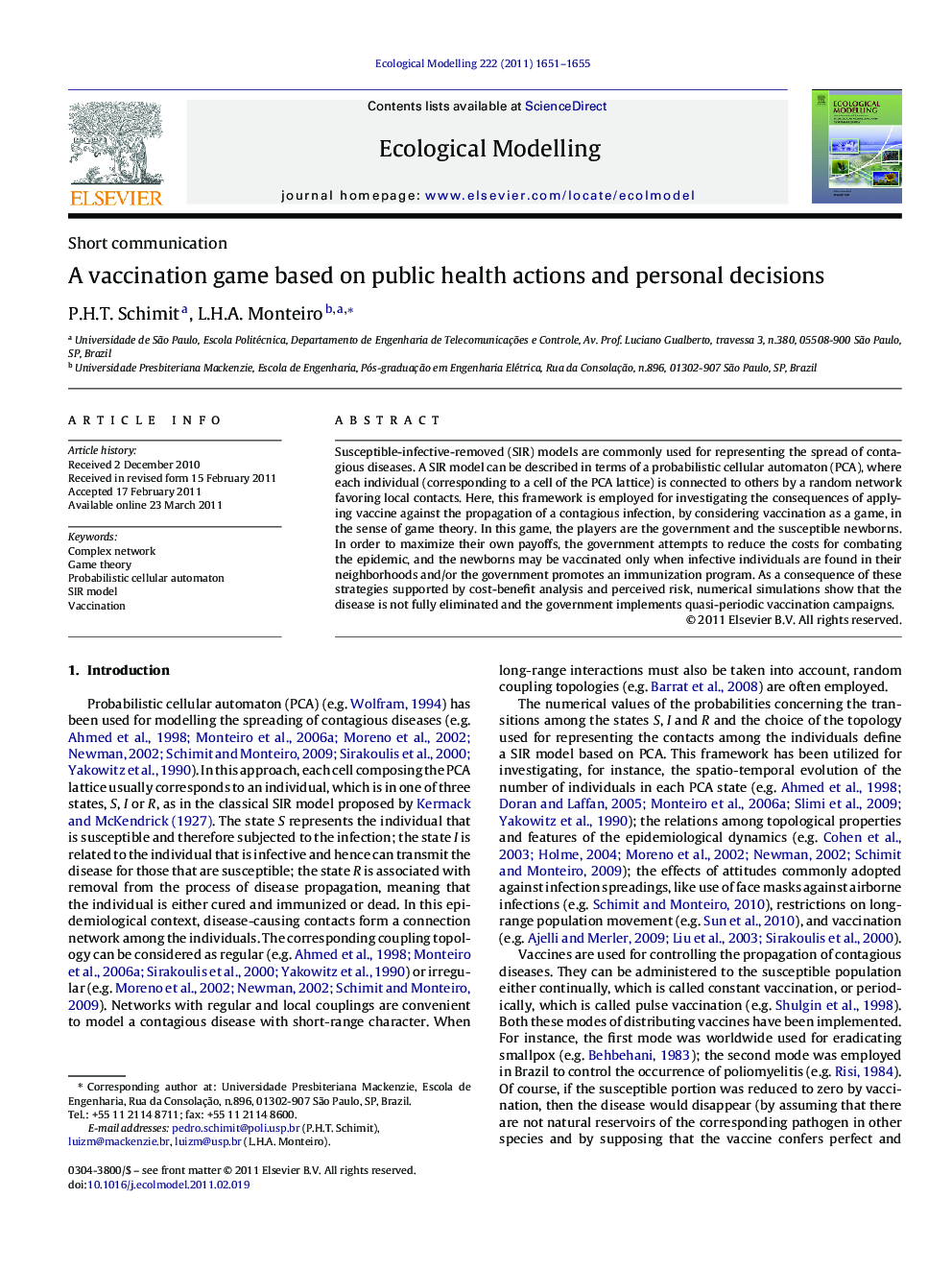| Article ID | Journal | Published Year | Pages | File Type |
|---|---|---|---|---|
| 4376772 | Ecological Modelling | 2011 | 5 Pages |
Susceptible-infective-removed (SIR) models are commonly used for representing the spread of contagious diseases. A SIR model can be described in terms of a probabilistic cellular automaton (PCA), where each individual (corresponding to a cell of the PCA lattice) is connected to others by a random network favoring local contacts. Here, this framework is employed for investigating the consequences of applying vaccine against the propagation of a contagious infection, by considering vaccination as a game, in the sense of game theory. In this game, the players are the government and the susceptible newborns. In order to maximize their own payoffs, the government attempts to reduce the costs for combating the epidemic, and the newborns may be vaccinated only when infective individuals are found in their neighborhoods and/or the government promotes an immunization program. As a consequence of these strategies supported by cost-benefit analysis and perceived risk, numerical simulations show that the disease is not fully eliminated and the government implements quasi-periodic vaccination campaigns.
► Vaccination is considered as a game, in the sense of game theory. ► The players are the government and the susceptible newborns. ► Strategies are based on cost-benefit analysis and perceived risk of getting sick. ► As a consequence, the government accomplishes quasi-periodic vaccination campaigns. ► Epidemics are controlled, but the corresponding disease is not eradicated.
